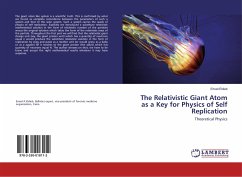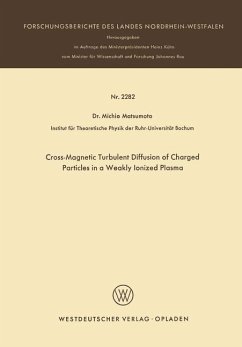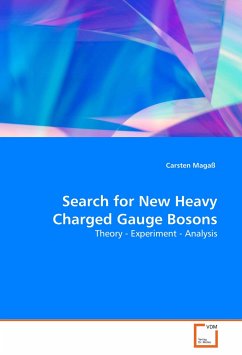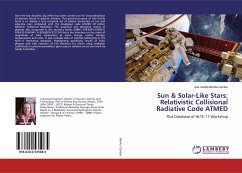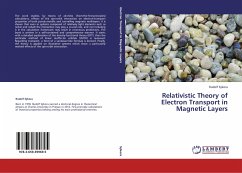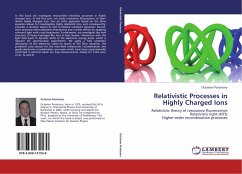
Relativistic Processes in Highly Charged Ions
Relativistic theory of resonance fluorescence Relativistic light shifts Higher-order recombination processes
Versandkostenfrei!
Versandfertig in 6-10 Tagen
45,99 €
inkl. MwSt.

PAYBACK Punkte
23 °P sammeln!
In this book we investigate strong-field relativistic processes in highly charged ions. In the first part, we study resonance fluorescence of laser-driven highly charged ions. Our ab initio approach based on the Dirac equation allows for investigating highly relativistic ions, and, consequently, provides a sensitive means to test correlated relativistic dynamics, bound-state quantum electrodynamic phenomena and nuclear effects by applying coherent light with x-ray frequencies. Furthermore, we investigate the level structure of heavy hydrogen-like ions in laser beams. Interaction with the light...
In this book we investigate strong-field relativistic processes in highly charged ions. In the first part, we study resonance fluorescence of laser-driven highly charged ions. Our ab initio approach based on the Dirac equation allows for investigating highly relativistic ions, and, consequently, provides a sensitive means to test correlated relativistic dynamics, bound-state quantum electrodynamic phenomena and nuclear effects by applying coherent light with x-ray frequencies. Furthermore, we investigate the level structure of heavy hydrogen-like ions in laser beams. Interaction with the light field leads to dynamic shifts of the electronic energy levels, which is relevant for spectroscopic experiments. We apply a fully relativistic description of the electronic states by means of the Dirac equation. We predicted cross section for the inter-shell trielectronic recombination and quadruelectronic recombination processes which have been experimentally confirmed in electron beam ion trap measurements, mainly for C-like ions, of Ar, Fe and Kr.






